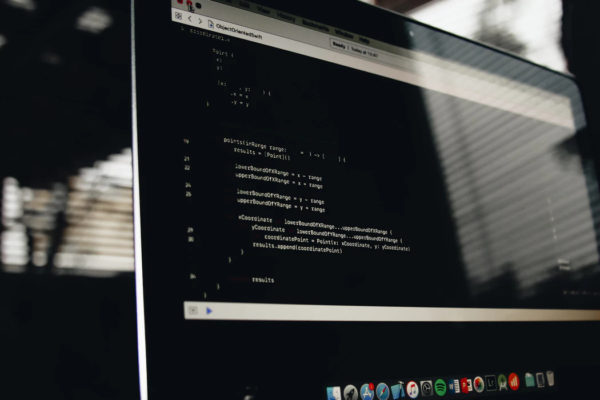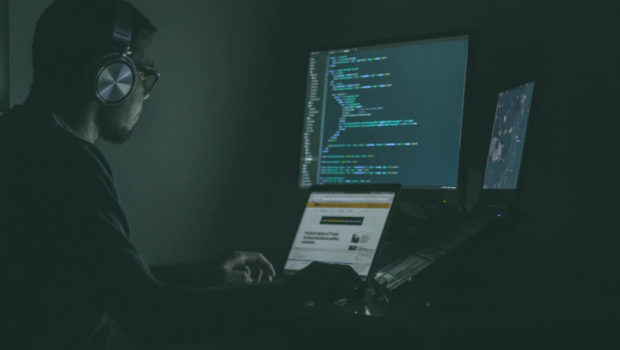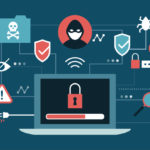Everything You Need To Know About Data Privacy
What do you think is the real problem in the digital age? Oddly enough, the answer is data privacy. Every day, hundreds of people around the world face the problem of personal information leakage.
And if you think that a single leak is a completely typical and non-dangerous case, you are mistaken. After all, each of us can become a victim of blackmail. Moreover, large companies even risk multi-million-dollar financial costs, loss of customer loyalty, and investor damage.

It’s not a good list, right?
Undoubtedly, your Internet activity should be protected from the beginning of the Internet session to the very end. But what to do to protect yourself and your data from cyber threats?
In this article, we will talk about all the features of data privacy that every active Internet user should know to avoid being under the control of fraudsters.
What is data privacy?
Data privacy is the receipt, processing, and storage of all data of a particular user, in compliance with all the rules and regulations of anonymity and confidentiality.
In theory, it sounds good. However, in practice, people do not understand what information should be confidential in the global Internet space. Therefore, here is a list of those files that are considered confidential by public and legal authorities.
- PII – is personally identifiable information. It includes all user data to identify a specific person, location, and the main differences from another user.
- PHII – is personal medical information. It includes the user’s personal data like medical records, insurance information, and other data related to a specific person’s health.
- PIFI – is personal financial information. Such data includes Bank card details, credit card numbers, and other financial data of a particular user.
- Student records – are various documents related to the training of a specific person. These include class schedules, transcripts, grades, and payment details.

These are four major data privacy types you should protect from third parties. It is worth noting that questions often arise about the PII category, which data can be included in this group. We’ve prepared a broad list of such data. So, please, retain the list for the entire life, just in case:
- Full user’s name, including last name, maiden name, or an alias.
- ID number, the number of insurance (SNN), driver’s license number, identification number, patient number, financial account number, and card information.
- Full address information and email.
- Personal characteristic. These include physical descriptions (height, facial features, eye color, and hair color), as well as fingerprints, x-rays, and biometric images and templates.
- Full date, the place of birth, weight, race, etc.
You can find more documents in the Data Protection: Privacy Notice Privacy Documents. It includes files on different topics of data privacy matters.
The category of non-confidential information
We’ve already reviewed the main data that has been included in the data privacy law. However, what data does not belong to data privacy law? As a rule, there are only two such types of data:
- PII data that is not related to the issue of secrecy. It includes publicly available user data. For example, information from a phone book or online directory.
- Non-PII data that is non-personal information. This is the list of information that is not used to identify a specific user. For example, cookies.
P.S.: However, there is a list of laws that state the cookies are personal information.
Therefore, you should consult the list of data privacy laws of a specific region or country for a more precise definition.
Data privacy VS Data protection
In data privacy issues, one more concept exists – data protection. These two terms are closely linked to each other. Their main goal is data protection. It includes protecting personal data from hacking, cyber attacks, and various Internet surveillance.
However, there is still a difference between them. Data privacy aims at collecting, storing, and processing data. Data protection aims to ensure data protection; in other words, the last controls security, ensuring confidentiality, integrity, and access to stored information.
Moreover, the concept of data protection is somewhat broader than data privacy. It includes personal information and the specific data of large corporations and financial companies’ data.

There is a certain myth that defines the storage of confidential data as automatic compliance with specific security rules. However, in practice, it looks like this:
- Data protection works to protect users from external threats, i.e. hackers, insiders, and outsiders.
- Data privacy works as internal protection that determines how information is stored.
We use privacy tools to stay anonymous on the network and protect our data from leaks. Here we are referring to PII-type of data. So, all data is encrypted, access is restricted, and our data is protected.
Note that such a method will work if our PII information package was collected correctly under all data privacy rules.
Don’t forget about it when you will choose the protected tools to stay secure on the net.
How to use data privacy and data protection?
You need to pay attention to the following points and use them when performing your daily Internet routine to ensure that data privacy and data protection rules are observed:
- Know the difference between data types. Be aware of what information belongs to the PI, PHII, or PIFI type, since each of the types includes information of different values. Therefore, it is necessary to classify them in advance to minimize the risks of information leakage later.
- Protect your private information. Use only those devices and programs that guarantee security, access control, the latest encryption methods, and anonymity. It is worth paying attention to decentralization since systems based on this principle provide greater protection than centralized ones. For example, Utopia P2P Ecosystem that withdrawn from the generally accepted single server for data storage. Instead, it creates a separate storage server for each user.
- Check the used methods of data protection. Test the security methods you use as often as possible. It will allow you to find the threat before it can happen. This way, you can protect yourself and your data, and fraudsters will lose the chance to profit from your data quickly.
Final word
Gone are the days when Internet users could not think about the computer privacy of transmitted data. Unfortunately, in 2020, there are hundreds of information leaks and cyber attacks and online surveillance of users daily.
Therefore, data privacy and data protection issues come to the fore in the Internet routine. So, we should take these issues more seriously and protect ourselves using the best privacy protection methods.
















